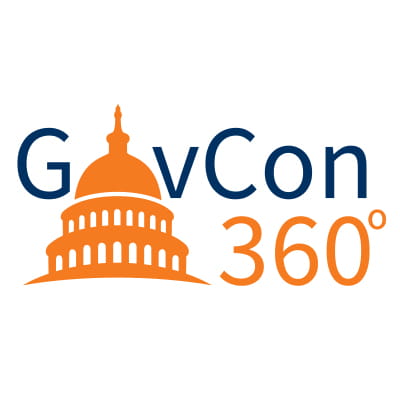Help maximize cost recovery with indirect rates

As the government increases its investment in trending areas such as technology, manufacturing capacity, and clean energy development, there are many opportunities for organizations to amplify their efforts in these areas by partnering with the government through grants and cooperative agreements. Grants and cooperative agreements are excellent ways for organizations to get access to government resources in a way that allows them to retain many of the benefits of the work performed such as IP.
There is often a perception that grants are less intensive compared to contracts, and while there may be a bit more flexibility in how an organization reports to the government when it comes to grants, these vehicles, which are generally governed by 2 CFR 200 Uniform Grants Guidance (and FAR 31 cost principles for for-profit recipients), have many contract-like requirements and have many of the same risks such as audit cost adjustments and violations of the False Claims Act.
One area that continues to create confusion is the cost recovery efforts associated with indirect rates. Indirect rates are a key consideration whether you are a new or experienced awardee.
What are indirect rates?
The terms indirect rate, overhead rate, and facilities-and-administrative rate (F&A) are often used interchangeably. Although the terms may be different, all have one common theme: Indirect rates are used as the recovery mechanism for company costs that are not directly chargeable to a certain project or grant. The definitions of “direct cost” and “indirect cost” allow some flexibility for the awardee to define these as it fits within their business environment and practices; but once defined, it’s important to apply these definitions consistently to avoid misstatement.
Organizations may base their indirect rates on industry standard approaches for cost accounting, and adjust as necessary to accommodate the particular agency rate or cost guidance that is applicable or to address award-specific requirements such as a prohibition on including independent research and development costs in grant overhead rates. Ultimately, indirect rates are composed of a pool of indirect cost, which is not directly chargeable to a project, over a base of direct cost which is accumulated across all projects within a business unit.
It’s important that the costs in the pool have a common relationship to the base so that the resulting allocation of cost is equitable and reasonable.

Supporting your indirect rates
Organizations must provide supporting documentation to justify their proposed and actual indirect rates with the government. When you are unfamiliar with the government grant world, the thought of supporting indirect rates to propose a higher indirect rate can be intimidating, but it is a normal exercise when using federal funds. Based on our experience, we have identified the following three major areas of concern related to supporting higher indirect rates for government grantees:
- Insufficient timekeeping policies and processes
- An inadequate ability of the accounting system to perform critical cost accounting functions, such as segregating direct from indirect expenses or being able to accumulate cost by project
- Lack of a process to identify and remove unallowable cost from reimbursement requests
Using sound financial data and addressing the major areas of concern identified above will go a long way to contribute to the adequacy of indirect rates, and the maintenance of suitable documentation to support the indirect rates. This information can be used to develop and review your actual indirect rates and further understand the efficiency of the organization’s cost recovery.
The company must also check that the indirect rate structure aligns with the complexity of the company’s organizational structure. We have seen instances where the Defense Finance and Accounting Services (DFAS) and the government-grant agency have requested the grantee to revise their indirect rate structure or face adverse consequences on current or future awards because their current structure did not equitably allocate costs to federal grants.
In some cases, a true-up to actual indirect rates may not be required. For example, organizations that have never negotiated an indirect rate with the government have the option to use a “de minimis” rate which is a 10% rate applied to a base of Modified Total Direct Cost, as stated in § 200.68 Modified Total Direct Cost (MTDC). MTDC excludes equipment, capital expenditures, charges for patient care, rental costs, tuition remission, scholarships and fellowships, participant support costs, and the portion of each sub-award in excess of $25,000. Other items may only be excluded when necessary to avoid a serious inequity in the distribution of indirect costs, and with the approval of the cognizant agency for indirect costs. In other cases, agencies may have their own guidance or preferences for use of “budgeted” rates. While avoidance of audit risk around an indirect rate is a plus, actual rates could be higher than these pre-set rates which would lead to under-recovery of indirect expenses. Many grantees are surprised when we calculate their actual rates, and they realize their indirect rates are running significantly higher.
Taking time to develop indirect rates pays off
Indirect rates are an important aspect of cost recovery on government grants. Although using an industry standard or de minimis rate can be easy work, they do not maximize cost recovery. Taking the time and effort to develop a supportable indirect rate based on your organizational structure may be worth more in the long run if done strategically.Contact
Rich Meene, Principal, Government Contracting, Global Consulting Solutions
862.245.5122
Kean Reilly, Manager, Government Contracting, Global Consulting Solutions
703.744.6731
Contact
Let’s start a conversation about your company’s strategic goals and vision for the future.
Please fill all required fields*
Please verify your information and check to see if all require fields have been filled in.

Access Our Government Contracting Topic Page for Key Insights & Powerful Tools
Related services
This has been prepared for information purposes and general guidance only and does not constitute legal or professional advice. You should not act upon the information contained in this publication without obtaining specific professional advice. No representation or warranty (express or implied) is made as to the accuracy or completeness of the information contained in this publication, and CohnReznick, its partners, employees and agents accept no liability, and disclaim all responsibility, for the consequences of you or anyone else acting, or refraining to act, in reliance on the information contained in this publication or for any decision based on it.













